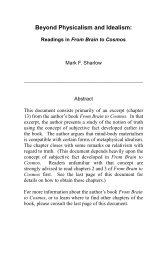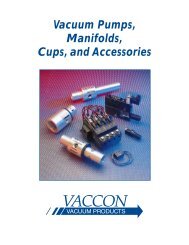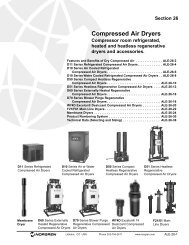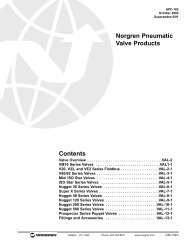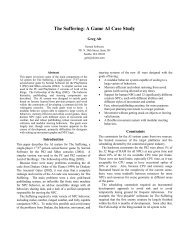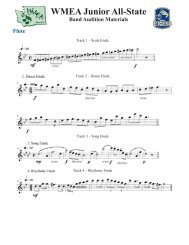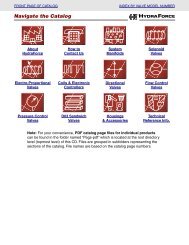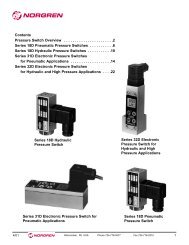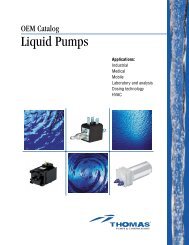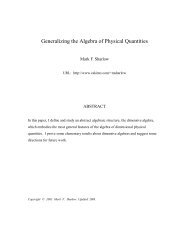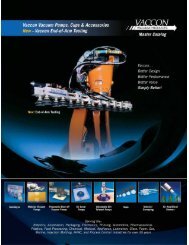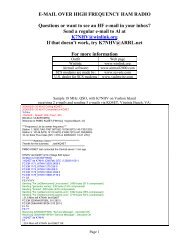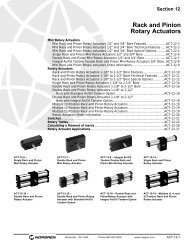Navigate the Catalog HYDRAFORCE
Navigate the Catalog HYDRAFORCE
Navigate the Catalog HYDRAFORCE
- No tags were found...
Create successful ePaper yourself
Turn your PDF publications into a flip-book with our unique Google optimized e-Paper software.
®<br />
<strong>HYDRAFORCE</strong><br />
Deadband/I-Min.<br />
Spool-type proportional valves will normally have a certain<br />
amount of spool overlap which produces deadband. For<br />
pressure and flow controls this deadband will occur at <strong>the</strong> start<br />
of spool movement. For directional valves <strong>the</strong> deadband will<br />
occur around <strong>the</strong> center position. Spool overlap reduces<br />
leakage in <strong>the</strong> null position and also provides a greater degree<br />
of safety in power failure or emergency stop situations. The<br />
effect of spool overlap requires that a certain minimum signal<br />
level has to be present at <strong>the</strong> solenoid coil before any<br />
noticeable result occurs in <strong>the</strong> system.<br />
If this characteristic is undesirable, deadband can be eliminated<br />
or reduced (for pressure and flow controls) by setting a<br />
minimum current (I-Min.) on <strong>the</strong> controller/amplifier. When<br />
I-Min. is adjusted above <strong>the</strong> zero point, <strong>the</strong> valve spool will<br />
immediately jump to this setting when power is appled,<br />
eliminating <strong>the</strong> deadband. Please note that <strong>the</strong> I-Min.<br />
adjustment will affect <strong>the</strong> I-Max. setting, so it should always<br />
be set first.<br />
When controlling directional valves using a multifunction/dual<br />
solenoid driver, <strong>the</strong> deadband elimination function is normally<br />
activated using a dip switch. The amount of deadband jump is<br />
typically factory-set, and is application-specific.<br />
Current Feedback<br />
When a current passes through a solenoid coil, heat is<br />
generated. This heat increases <strong>the</strong> resistance of <strong>the</strong> coil. For<br />
example, a coil may have a resistance of seven ohms at 20°C,<br />
and a resistance of nine ohms at 100°C. This increased<br />
resistance causes a reduction in coil power which results in<br />
a lower valve setting.<br />
To compensate for temperature induced changes, some<br />
controller/amplifiers have a function known as “Current<br />
Feedback.” A current feedback resistor is added to <strong>the</strong> circuit<br />
in series with <strong>the</strong> solenoid coil. This allows <strong>the</strong> solenoid current<br />
to be proportional to <strong>the</strong> input signal voltage, and independent<br />
of <strong>the</strong> solenoid resistance. Power supply voltage must be<br />
sufficient to overcome <strong>the</strong> increased resistance.<br />
3.561.4



